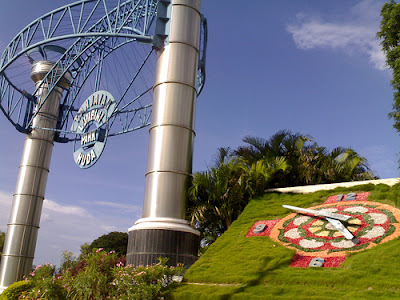Photo: Sultan Bayezid in Captivity of Timur (1878) by Stanislaw Chlebowski, oil on canvas painting, 70 × 112 cm, Lviv National Art Gallery, Ukraine
In this painting, often titled as “Bayezid I Held Captive by Timur”, the Polish painter Stanislaw Chlebowski (1835-84) depicts two of the most dreaded conquerors of his times.
The painting, the title of which is variously translated also as “Sultan Bayezid Prisoned by Timur”, or “Bayezid I At The Hands Of Timur”, depicts Timur (also known as Tamerlane and or Timur the Lame) as the figure standing in the fore, wearing a kimono-styled mongoloid tunic. As he is lame*, he is supporting himself with a cane. Bayazid is the declining old man with downcast eyes and apparently suffering from a bout of depression.
Bayezid I (1360-1403), the Ottoman Sultan from 1389 to 1402, had the reputation of having one of the largest and best armies in the Islamic world. He had leaded many military campaigns and unsuccessfully besieged Constantinople.
The Battle of Ankara, fought on 20 July 1402, ended in a major victory for Timur, and it marked the worst crisis for the Ottoman Empire, though it gradually recovered and flourished for two more centuries. But it was the beginning of the end of the Timurid Empire that disintegrated following Tamerlane's death on 18 February 1405.
In 1402, Bayezid was trying to conquer Hungary, when Timur found it the right opportunity to invade the Ottoman Empire. The Sultan rushed back to confront the Timurids, who were slaughtering people and plundering cities and towns on their way. The Sultan withdrew his forces from the siege of Constantinople and deployed them against the Timurids.
By the time, the brother-in-law and a vassal of the Sultan, the Serbian prince Stefan Lazarević and his forces, along with the Wallachia forces, were already fighting off the invaders. Bayezid joined forces with Lazarević who advised him to break out with him, but the sultan declined. Eventually, Taimur defeated the Ottoman forces and took the sultan prisoner on 20 July 1402.
Along with the sultan, one of his wives, Despina Hatun (Mileva Olivera Lazarević, the younger sister of Stefan Lazarevic) and one of the sultan’s sons Mustafa Celebi were also captured by Timur. Olivera was freed after the death of the sultan in captivity in March 1403. But Mustafa Celebi was held prisoner in Samarkand until 1405.
The battle is of special significance in Ottoman Empire’s history as it is the only time a ruling Sultan was captured and made prisoner. The battle also fractured the empire and ignited a civil war among Bayezid's sons for power, which continued for 11 years.
Some historians estimate that both the armies together had nearly one million soldiers, though claims regarding the exact strengths widely vary. It has been claimed that over 50,000 Turks were killed in a few hours of the war.
Earlier, Timur massacred over 100,000 people (various estimates put the figure between 100,000 and 200,000) in the city of Delhi, after a battle on 17 December 1398 in which he defeated the army of Sultan Nasir-ud-Din Mahmud Shah Tughluq who ruled the Sultanate of Delhi. According to historians, Timur’s invasions caused the deaths of 17 million people, about 5% of the world population of the time.
Timur continued to expand his empire until his death. After three months of battles against the Ming Dynasty of China, Timur died of fever on 18 February 1405.
Soon after Timur's death, his empire fell apart. But Shahrukh Mirza, the youngest son of Timur from one of his concubines, ruled the eastern region of the fractured empire, ruling from Herat in Afghanistan. After a string of weak rulers, the Timur dynasty’s rule ended in 1507.
Tamerlane’s descendents include Babur, founder of the Mughal Empire, and the Timurid ruler Ulugh Beg.
* In 1363, it is believed, Timur tried to steal a sheep when a shepherd shot two arrows, injuring his right leg and right hand where he lost two fingers. These injuries crippled him for life, and earned him the names Timur the Lame and Tamerlane.




























